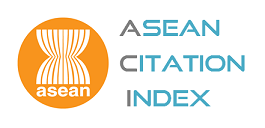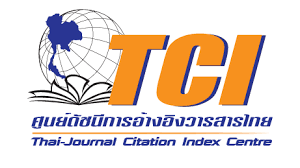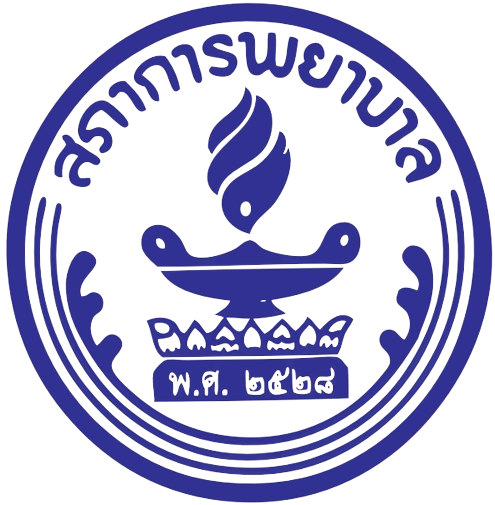Effects of a Planned Behavioral Modification and Family Support Program on Weight Control Behaviors and Muscle Mass in Overweight Late School-aged Children
DOI:
https://doi.org/10.60099/jtnmc.v40i02.271414Keywords:
Planned behavioral modification program, theory of Planned behavior, late school-aged children, family support, muscle mass, weight control behaviorsAbstract
Introduction Overweight and obesity among school-aged children are significant public health problems at both national and global levels. Previous studies on various weight management programs for school-aged children have found that children exhibit inconsistent food consumption behaviors and physical activity. Therefore, promoting weight control in school-aged children with overweight, along with family support, will result in appropriate food consumption behaviors and physical activity. This approach can help children maintain healthy and sustainable behaviors into adulthood.
Objective This study aimed to investigate the effects of a Planned Behavioral Modification and Family Support Program on weight control behaviors and muscle mass among overweight late school-aged children.
Design This quasi-experimental study with a two-group repeated measures design applies the Theory of Planned Behavior to promote positive attitudes towards weight control in children. The children developed positive beliefs and attitudes towards their weight control behaviors due to receiving specific, individualized information. Additionally, the study considered the subjective norms, including the opinions of significant individuals such as caregivers or parents and peers, which are crucial for children’s weight-control behaviors. Furthermore, the children’s control beliefs about their ability to manage their weight were expressed with confidence and intention, leading to appropriate weight control behaviors.
Methodology The sample consisted of overweight children studying in grades 4-5 at schools under the jurisdiction of a provincial primary education office in northeastern Thailand during the 2022 academic year. A multi-stage sampling method was used, with schools randomly selected to form one experimental and one control group. Classrooms and students were selected to ensure similar characteristics and assessed using the weight-for-height reference charts for Thai children aged 6-19 years from the Department of Health, Ministry of Public Health, 2021. The sample size was calculated using G Power, resulting in 54 participants, divided into 27 for the experimental group and 27 for the control group, matched by gender. Research instruments included: 1) a child information questionnaire, 2) a weight control behavior questionnaire, 3) a food consumption and physical activity behavior log, 4) a weight, height, and muscle mass record form, and 5) a 4-week Planned Behavioral Modification and Family Support Program, developed by the researchers based on the Theory of Planned Behavior. The content validity of each instrument was confirmed with a content validity index of 1. The reliability of the weight control behavior questionnaire was tested with a Cronbach’s alpha coefficient of .73. Data were collected from June 7 to August 14, 2023. The experimental group received the program, consisting of two activities: 1) a 3-hour training session for primary caregivers, providing knowledge on their roles and guidelines for managing overweight children and promoting family support for weight control, and 2) four 2-hour weekly training sessions for overweight children over 4 weeks. The control group received usual care from their families. Data on weight control behaviors were collected 2 and 4 weeks after the program (weeks 6 and 8), and muscle mass was assessed immediately after the program. Data were analyzed using descriptive and inferential statistics, including Chi-square test, Independent t-test, Paired t-test, and Two-way repeated measures ANOVA, with a significance level set at .05.
Results The experimental group had a mean age of 10.4 years (SD=0.52), a mean weight of 59.48 kilograms (SD=10.64), and a mean height of 145.93 centimeters (SD=7.13). They were classified as overweight (44.44%) and obese (55.56%). Most of them were from nuclear families, with mothers being the primary food providers (63%). The control group had a mean age of 9.96 years (SD=0.71), a mean weight of 58.89 kilograms (SD=11.60), and a mean height of 147.67 centimeters (SD=7.99). This group was classified as overweight (63.00%) and obese (37.00%). Most children were also from nuclear families, with mothers being the primary food providers (51.85%). Comparing characteristics between the experimental and control groups showed no statistically significant differences (p>.05). After participating in the program, weight control behaviors were significantly different over time (F=728.927, p<.001). The interaction between the program and time significantly affected the weight control behaviors of the participants (F=316.027, p<.001). When analyzing between groups, the control and experimental groups showed statistically significant differences in weight control behaviors (F=734.303, p<.001). Additionally, the experimental group had a statistically significant increase in muscle mass compared to before the program (t=2.635, p=.014), but there was no significant difference compared to the control group (t=0.077, p>.05).
Recommendation The results of this study indicate that the Planned Behavioral Modification and Family Support Program is effective in weight management among late school-aged children who are overweight. The experimental group demonstrated improved weight control behaviors and increased muscle mass. Therefore, school health nurses or teachers can implement this program for weight management by involving primary caregivers, to promote appropriate weight control behaviors in those children.
Downloads
References
Noin K. Overweight and obesity among Thai school-aged children and adolescents. Journal of The Royal Thai Army Nurses [Internet]. 2017 [cited 2024 Sep. 29];18(suppl.2):1-8. Available from: https://he01.tci-thaijo.org/index.php/JRTAN/article/view/101572 (in Thai)
Chaisri J, Klungtumneim K, Buajarean H. Clinical nursing practice guideline for management of obesity in children: the synthesis of thesis. Journal of The Royal Thai Army Nurses [Internet]. 2014 [cited 2024 Sep. 29]; 15(2):360-7. Available from: https://he01.tcithaijo.org/index.php/JRTAN/article/view/25303 (in Thai)
Rattanachueek S, Thaweekul P, Iamopas O, Suthatworawut U. Medical guidelines operations to prevent and treat obesity in children 2014. Child Nutrition Club of Thailand, Royal College of Pediatricians of Thailand. [Internet]. 2021 [Cited 2024 March 10]. Available from: https://www.slideshare.net/slideshow/cpg-obesity-in-children/78193366
Pulgarón ER. Childhood obesity: a review of increased risk for physical and psychological comorbidities. Clin Ther. 2013;35(1):A18-32. https://doi.org/10.1016/j.clinthera.2012.12.014 PMID: 23328 273; PMCID: PMC3645868.
World Health Organization (WHO). Obesity and overweight key facts [internet]. 2024 [cited 2024 March 1]; Available from: https://www.who.int/news-room/fact-sheets/detail/obesity-andoverweight
Teerawattananon Y, Luz A. Obesity in Thailand and Its Economic Cost Estimation. Tokyo: Asian Development Bank Institute; 2017. Available from: https://www.adb.org/sites/default/files/publication/236536/adbi-wp703.pdf
Di Cesare M, Sorić M, Bovet P, Miranda JJ, Bhutta Z, Stevens GA, et al. The epidemiological burden of obesity in childhood: a worldwide epidemic requiring urgent action. BMC Med. 2019 Nov 25;17(1):212. https://doi.org/10.1186/s12916-019-1449-8 PMID: 31760948; PMCID: PMC6876113.
Ministry of Public Health. Health Data Center. Health KPI 6-14 years [Internet]. 2021 [cited 2021 Oct 30]. Available from: https://hdcservice.moph.go.th/hdc/reports/report_kpi.php?flag_kpi_level=1&flag_kpi_year=2021&source=pformated/format1.php&id=e28682b2718e6cc82b8dbb3e00f2e28e
Ministry of Public Health. Health Data Center. Health KPI 6-14 years [Internet]. 2021 [cited 2021 May 15]. Available from: https://hdc.moph.go.th/center/public/standard-report-detail/e28682b2718e6cc82b8dbb3e00f2e28e
Jitpakdee P, Thummanon T, Bakasatae A. Factors associated with weight for height of students in a school in Chonburi province. J Public Health. 2014; 44(3): 250-9. Available from: https://he02.tci-thaijo.org/index.php/jph/article/view/51216 (in Thai)
Bureau of Nutrition, Department of Health: Ministry of Public Health. Guidelines for screening, forwarding and solving the problem of at-risk groups of obese children in educational institutions. Public Health Service Facilities and DPAC Clinics. Bangkok: Kaew Chaochom Media and Publishing Center Suan Sunandha Rajabhat University; 2019. (in Thai)
Mack I, Reiband N, Etges C, Eichhorn S, Schaeffeler N, Zurstiege G, et al. The kids obesity prevention program: cluster randomized controlled trial to evaluate a serious game for the prevention and treatment of childhood obesity. J Med Internet Res. 2020 Apr 24;22(4): e15725. https://doi.org/10.2196/15725 PMID: 32329742; PMCID: PMC7210499.
Chawla N, Panza A, Sirikulchayanonta C, Kumar R, Taneepanichskul S. Effectiveness of a school-based multicomponent intervention on nutritional status among primary school children in Bangkok, Thailand. J Ayub Med Coll Abbottabad. 2017;29(1):13-20. Available from: https://pubmed.ncbi.nlm.nih.gov/28712165/
Chaiopanont S. A 3-years-follow-up study of the effect of the weight control program on KAP and behavior among overweight and obese school children in Nonthaburi province. Journal of the Medical Association of Thailand. 2016; 99(8):853–860. Available from: https://www.thaiscience.info/journals/Article/JMAT/10986113.pdf
Ajzen, I. The Theory of Planned Behavior. Organizational Behavior and Human Decision Processes. 1991;50: 179-211. [cited 2020 Sep 12]. Available from: https://reedjoe.com/wp-content/uploads/2018/04/ajzen1991_teori-perilaku-yang-direncanakan_theoryof-planned-behavior.pdf
House J. Social support and social structure. Sociological Forum. 1987;2(1),135–46. Available from: https://deepblue.lib.umich.edu/bitstream/handle/2027.42/45658/11206_2005_Article_BF01107897.pdf?sequence=1
Jumrongpeng J, Kummabutr J, Buaboon N. Effects of a weight control program on eating, physical-activity behaviors, and bodyweight among overweight, late school-age children. BCNNON Health Science Research Journal. 2025;13(1):1-10. Available from: https://he01.tcithaijo.org/index.php/JHR/article/view/199738 (in Thai)
Srisatidnarakul B. The methodology in nursing research. Bangkok: You and I Intermedia; 2010.
Bureau of Nutrition, Department of Health: Ministry of Public Health. Guidelines for obesity and weight management in childhood. Bangkok: WVO Office of Printing Mill; 2014. Available from: https://nutrition2.anamai.moph.go.th/th/cms-of-14/download/?did=193927&id=46105&reload= (in Thai)
Ito T, Sugiura H, Ito Y, Noritake K, Ochi N. Relationship between the skeletal muscle mass index and physical activity of Japanese children: a cross-sectional, observational study. PLoS One. 2021 May 26;16(5): e0251025. https://doi.org/10.1371/journal.pone.0251025 PMID: 34038448; PMCID: PMC8153420.
Srithanya S,Thongbai W, Kummabutr J.The effects of a planned behavior program on the eating and physical activity behaviors of overweight late primary school-aged children. Journal of Nursing and Education. 2020;7(3):272-9. Available from: https://he01.tci-thaijo.org/index.php/JNAE/article/view/240159 (in Thai)
Pimmanee P, Prabpai S. Effect of program promoting weight control behavior using Theory of Planned Behavior on weight control behavior in overweight school age children. VAJIRA Nursing Journal. 2018; 19(2):13-23. Available from: https://he02.tci-thaijo.org/index.php/vnj/article/view/138942 (in Thai)
Koźlenia, D., Popowczak, M., Szafraniec, R., Alvarez, C., & Domaradzki, J. Changes in Muscle Mass and Strength in Adolescents Following High- Intensity Functional Training with Bodyweight Resistance Exercises in Physical Education Lessons. Journal of Clinical Medicine. 2024;13(12), 3400. https://doi.org/10.3390/jcm13123400 PMID: 38929929 PMCID: PMC11204247
Physical activity and health division, Department of Health: Ministry of Public Health. A guide to promoting physical activity for children with special needs. [Internet]. 2024 [cited 2024 Dec 8]. Available from: https://dopah.anamai.moph.go.th/web-upload/8x6b2a6a0c1fbe85a9c274e6419fdd6071/m_magazine/24466/4969/file_download/5347499249d845ecc4a881a71c431021.pdf (in Thai)
Downloads
Published
How to Cite
Issue
Section
License
Copyright (c) 2025 Journal of Thailand Nursing and Midwifery Council

This work is licensed under a Creative Commons Attribution-NonCommercial-NoDerivatives 4.0 International License.








